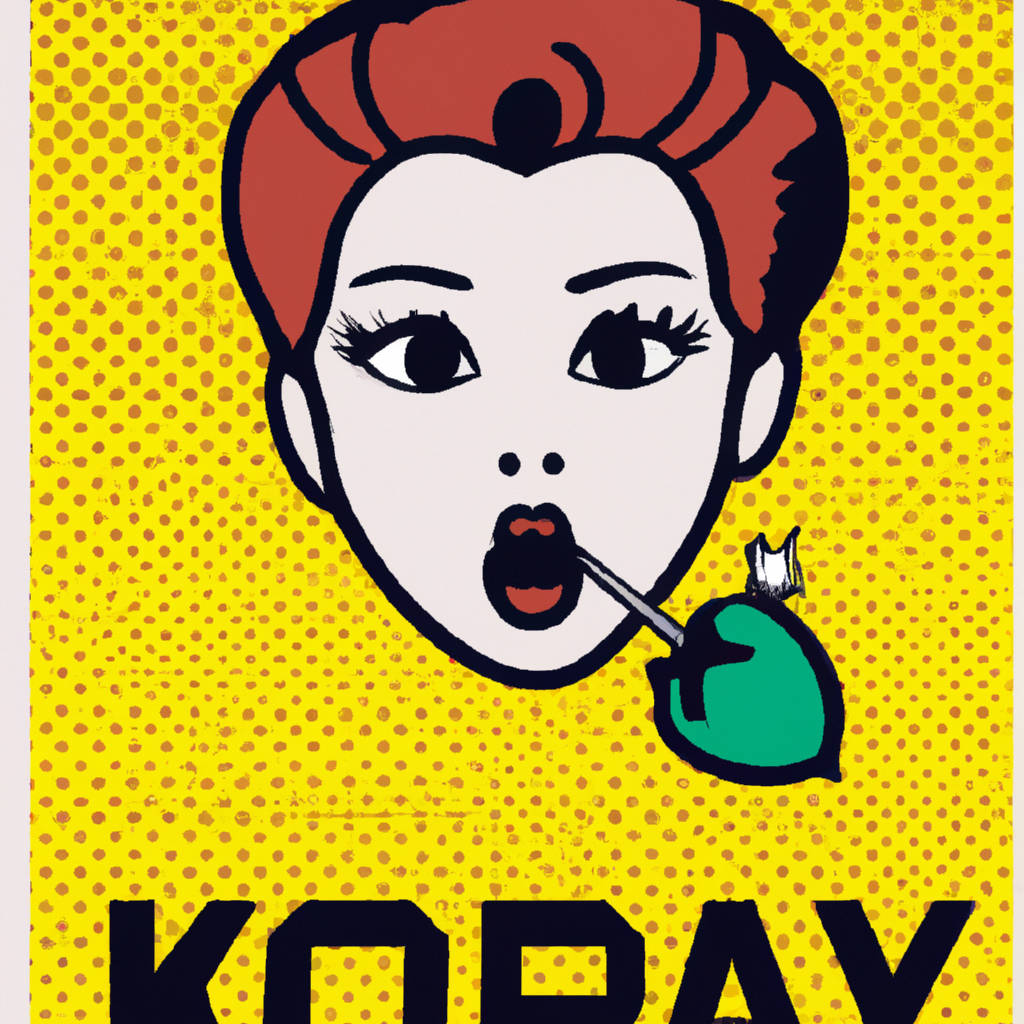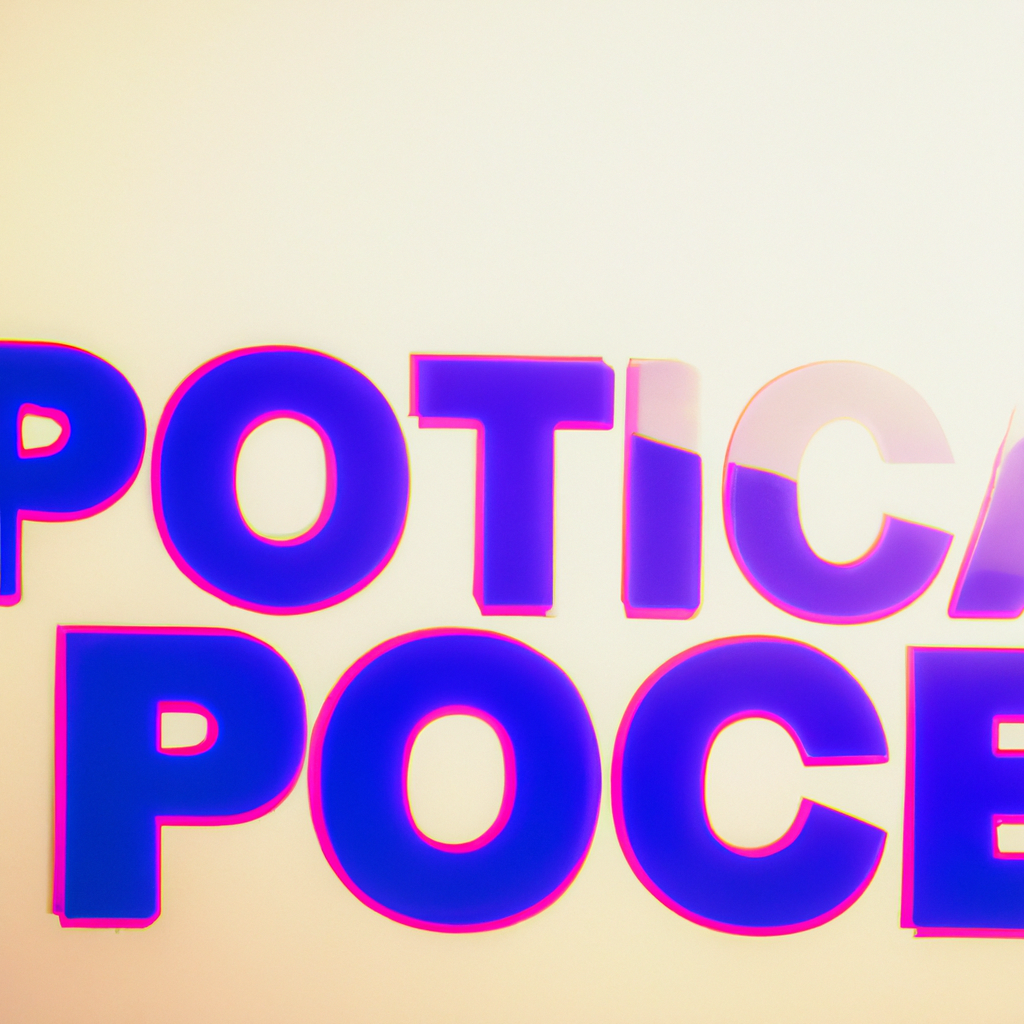From the bold splashes of colour of Jasper Johns to the subversive photomontage of Richard Hamilton, Pop Art has had a lasting impact on contemporary visual culture that has continued to evolve over the years. Infusing humour and irony into everyday objects, the Pop Art movement revolutionised art trends, forever changing how we view everyday objects and culture. Jump in to discover how Pop Art has and continues to shape the way we look at the world around us.
1. The Pop Art Phenomenon: A Colorful Revolution in Visual Culture
Amid the conservatism of the 1950s and into the 60s, Pop Art shook the foundations of the art world. A colorful revolution was afoot – one that signaled a seismic shift in the way we perceive and interact with art, fashion, and design.
The Evolution of Pop Art. This movement was not to be confused with its counterparts of the time, such as Surrealism and Abstract Expressionism. Instead, Pop Art was celebrated for its acceptance of popular culture and its emphasis on smooth, eye-catching visuals. Its ironic detachment from traditional art forms prompted a new wave of borrowing from magazines, ads, comic books, and other mass media.
Before Pop Art, notions of assembling media-driven images would have been considered blasphemous, and yet this phenomenon was revolutionary in its focus on blurring the boundaries between high art and low culture. Pop Artists rejected elitism and the elite art market, instead embracing the world of low-priced consumer goods.
What Defines Pop Art? This movement is incredibly hard to define, due to its revolutionary and ever-evolving nature. At its core, Pop Art is thought of as a reaction to existing art forms. Richard Hamilton succinctly characterized the movement as “popular, transient, expendable, low-cost, mass-produced, young, witty, sexy, gimmicky, glamorous, and Big Business”. Pop Art is certainly anything but conventional.
Pop Art is characterized by its bright, vibrant color palettes and its utilization of commonplace objects, as well as licensed and mass-produced products. Often, Pop Art places a great emphasis on decoration, trends, and irony.
The Lasting Legacy of Pop Art. Although the heyday of this period was the 1950s and 60s, Pop Art has continued to have a lasting influence on modern art. Its boundary-breaking approach and embrace of consumerism and -ism continue to resonate to this day. From luxury brands incorporating tongue-in-cheek Pop Art aesthetics to museums dedicated to the movement, Pop Art is a testament to the power of breaking boundaries and transcending art forms.
2. From Soup Cans to Neon Heroes: Tracing the Evolution of Pop Art Icons
Pop Art has evolved as a creative movement of 20th- century visual arts which had its roots in Britain, before making its way to America. Through the years, this art movement has created some of the most iconic figures, from soup cans to real life figures.
The Soup Can:
Pop art began to emerge in America in the 1950s. Around this time, one of the first pop art icons that emerged was the soup can. This came from the works of artist, Andy Warhol, who created a series of 32 canvases called ‘Green Campbell’s Soup Cans’.
- The cans are a reference to the current mass-produced objects in everyday American life.
- The painting was an interpretation of a singular can repeated many times on one canvas.
- This pioneering symbol of Pop Art was not meant to make a statement but to challenge the concepts of originality and artistic vision.
The Neon Silhouette:
The public’s fascination with pop art became much more obvious in the mid-50s, with the rise of billboards, neon signs, and other forms of signage. This was the basis of Roy Lichtenstein’s comic book-style painting, which depicted a giant woman in a bright red dress trimmed with yellow.
- This painting broke with prevailing trends of the time and attempted to redefine the concept of visual art, as it utilized shapes and colors that were both unconventional and captivating.
- The painting also featured Lichtenstein’s signature bright colors, distorted shapes, and bold lines.
Neon Heroes:
The neon hero is one of the most iconic figures of the pop art era. This figure emerged in the late 60s and early 70s and was characterized by a bright neon costume. The most iconic of these heroes is the image of Wonder Woman, which was drawn by artist Trina Robbins.
- The bright colors and strong lines are a tribute to the aesthetics of the time, as well as a reflection of the heroine’s strength and power.
- The iconic image of Wonder Woman has become a symbol of female empowerment, representing the idea that women can be both strong and beautiful.
Pop art has been an ever-evolving artistic movement. From soup cans to neon heroes, the innovative styles of each iteration have been challenging the concepts of traditional visual art. Through its creativity and unique style, pop art has become a cultural phenomenon.
3. The Enduring Pop Art Legacy: Shaping Contemporary Visual Culture
Pop art emerged in the 1950s and 60s as an answer to abstract expressionism, and it has had an enduring legacy ever since. The movement brought art out of the gallery and into everyday life. It attacked traditional values with vivid, sometimes irreverent images of everyday objects, captivating viewers in a fresh and exciting way. But the innovations of Pop Art have gone beyond the visual. Through its proficient application of technology and media, Pop Art has profoundly influenced the way visual culture is produced and consumed worldwide.
Pop Art blurred the line between high and low culture, between elite artistic circles and mainstream popular culture. Its groundbreaking approach to visual culture destabilized existing hierarchies in the art world. It allowed everyday motifs to be immortalized as art. It also brought artistes like Andy Warhol and Roy Lichtenstein, and their iconic works, into the mainstream.
To this day, Pop Art continues to inspire artists, designers, and other creative professionals. Its bold colors, accessible motifs, and sense of play have been reimagined for contemporary audiences. Through its use of technology and media, it has also had an enormous influence on advertising, graphic design, and the entertainment industry. Its lasting impact can be seen in products, advertisements, and fashion.
- POP ART TODAY
Nowadays, Pop Art is a major part of contemporary culture and can be seen everywhere. The influence of Pop Art has been felt in fashion as well. Famous fashion designers like Jeremy Scott and Giles Deacon embrace its playful colors and motifs, while brands like Marc Jacob sprinkle elements of Pop Art into their iconic pieces. Moreover, Pop Art is embraced by the entertainment industry, film, music, television, and gaming. It’s also present in art shows and in the work of contemporary artistes.
From the streets of New York in the 1950s to the digital age of the 21st century, Pop Art continues to shape the way we consume and interpret visual culture. It has fundamentally altered our conception of artistic value. Pop Art has allowed us to experience life in a new, exciting way, and for this, it will be remembered and appreciated for years to come.
4. Beyond the Canvas: Exploring the Lasting Impact of Pop Art on Fashion and Design
Pop Art is as iconic as it is provocative. But it’s much more than just a style of art that evoked strong reactions. It was a cultural movement with a far-reaching influence that extends well beyond the walls of galleries and museums.
The rebellious aesthetics of Pop Art was embraced by the fashion world in the 1960s, permanently altering modern styles. Slim Aarons’ iconic photographs capture the era’s ensembles – wildly colorful prints, geometric shapes, and anti-establishment slogans that celebrate individuality. With its vibrant eighties-inspired prints and bold ensembles, designer Katie Gallagher evolved the look to reflect little ones. While the classic designs of Kate Spade New York are rooted in the era’s influence.
The egg-shaped furniture, kitschy decor, and graphic prints of Pop Art have also had a lasting impact on interior design. Installations by Dan Flavin, Andy Warhol, and Roy Lichtenstein have provided actionable ideas for designing with a Pop Art flair, from accent walls to bolder furniture choices.
This inspiring movement wasn’t afraid to challenge and push boundaries, which is why it still captures our attention today. Pop Art’s lasting influence on fashion, design, and more will always be an integral part of our culture.
- Fashion: Slim Aarons’ photographs capture the era’s ensembles with iconic prints, geometric shapes, and slogans
- Design: Egg-shaped furniture, kitschy decor, and graphic prints have had a lasting influence on interior design
- Legacy: Pop Art’s lasting influence on fashion, design, and more will always be an integral part of our culture
Pop Art may have originated in the mid-twentieth century, but its influence still feels modern and prominent today. From bright, high-contrast colours, to the juxtaposition of everyday objects, Pop Art has become part of the visual language of our time. Its exploration of media and societal trends still surprise us, challenge us and remain a significant part of our culture and art history.




